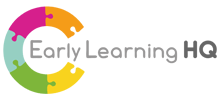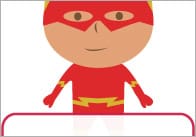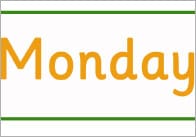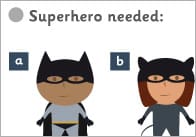A guide to teaching phonics
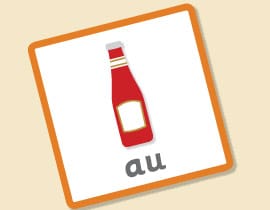
All schools are required to teach phonics in Key Stage 1 however, there is no statutory requirement for schools to follow any particular phonics teaching scheme. Ofsted does not have a programme that they recommend.
What has happened to Letters & Sounds?
For many years the go to document for teaching phonics was the Letters and Sounds handbook, originally published by the Department for Education way back in 2007. It served as a framework rather than a complete Systematic Synthetic Phonics (SSP) programme, as no resources or decodable books were provided with it. Schools had to create their own resources to complement the handbook. Over time, many schools either developed their own teaching programs based on the Letters and Sounds progression or chose alternative programs.
In 2021, the DfE announced that they would not be publishing a full Letters and Sounds program or an updated progression. Instead, they introduced a validation process for third party phonics programs, allowing creators to submit their programmes for approval. Given that Letters and Sounds was not a SSP but rather a framework, it was not included on the validated list.
However, it should be noted that if a school delivers high-quality phonics provision based on the Letters and Sounds progression, they can continue to use it. There is no formal requirement to discontinue using Letters and Sounds.
Validated Systematic Synthetic Phonics (SSP) programmes
The Department for Education have validated 48 SSP programmes. Some of the most popular include:
Little Wandle Letters and Sounds Revised
The full list of validated Systematic Synthetic Phonics (SSP) programmes can be found on the DfE Website
Letters and Sounds phases
Many of the validated SSPs still follow the phases outlined in the Letters and Sounds framework. Here is an overview of these phases:
Phase 1
Phase 1 focuses on developing children’s ability to listen to, create, explore, and discuss sounds. There is an emphasis on oral segmenting and blending of familiar words.
This phase is divided into 7 aspects, which are taught through games. It provides a foundation for all other phases and in this regard it is a really crucial phase which should continue throughout Key Stage 1 and Key Stage2.
The activities in Phase 1 are primarily adult-led, although practitioners should remain attentive to opportunities for language development that arise through children’s play and while exploring their individual interest.
Here are some printable resources to help with the teaching of phase 1
Phase 2
Introduce Grapheme-Phoneme Correspondences (GPCs) systematically. In phase 1 there are 5 sets of GPCs as outlined below:
- Set 1: s, a, t, p
- Set 2: i, n, m, d
- Set 3: g, o, c, k
- Set 4: ck, e, u, r
- Set 5: h, b, f, ff, l, ll, s, ss
When teaching GPCs, use sounds, pictures, actions, and plenty of practice in forming the letters. Children should practice forming the letter in the air, on the palm of the hand, on another child’s back, or on a rough surface before they begin to write on paper.
Printable resources to help with the teaching of phase 2
Phase 3
Phase 3 builds on Phase 2, introducing more GPCs as well as consonant digraphs, vowel digraphs and vowel trigraphs. The aim is that by the time they have completed Phase 3, children will be able to write each of the 44 phonemes.
- Set 6: j, v, w, x
- Set 7: y, z, zz, qu
Vowel digraphs and trigraphs: ai, ee, igh, oa, oo, ar, or, ur, ow, oi, ear, air, ure, er
Consonant digraphs: ch, sh, th, ng
Printable resources to help with the teaching of phase 3
Phase 4
No new GPCs are introduced in phase 4. Instead, the focus here is to consolidate the children’s existing knowledge developed in the previous phases and to help them improve their reading and spelling skills. There is also an emphasis on helping children to blend and segment words with adjacent consonants.
These are words that start or end with more than one consonant, such as CVCC, CCVC, CCVCC, CCCVCC, and CCCVC words. Unlike digraphs and trigraphs, where two or three letters combine to make a single sound, adjacent consonant phonemes in these words can each be distinctly heard when spoken.
Examples of CVCC words: lamp, sand, milk, left, vest.
Examples of CCVC words: skin, grin, stop, swim, spot.
Examples of CCVCC words: stamp, drink, print, twist, frost.
Examples of CCCVCC words: scrunch, splint, scratch, strand, stretch.
Examples of CCCVC words: street, string, split, scrap, strap.
Printable resources to help with the teaching of phase 4
Phase 5
Phase 5 is divided into three sections, as detailed here:
Phase 5a (Weeks 1-4)
These weeks introduce new GPCs, including some split digraphs: a_e, e_e, i_e, o_e, u_e. Children will be taught to recognise them as teams of letters that work together but are not directly next to each other.
Phase 5b (Weeks 4-7)
There is an emphasis during these weeks on demonstrating that some graphemes can be pronounced in different ways, such as “ch” in “check,” “chef,” and “school.” Model how to try different pronunciations when a word doesn’t make sense. Children will be shown 4 alternative pronunciations of graphemes in total.
Phase 5c (Weeks 8-30)
In addition to consolidation knowledge built up through the entire programme this part focuses on learning that some phonemes have multiple spellings. Although it can be challenging, there are patterns and rules that can help. Encourage children to discover these rules through investigative games and pattern recognition.
Printable resources to help with the teaching of phase 5
Phase 6
Phase 6 reinforces learning from Phase 5, helping children develop reading automaticity and exploring spelling rules and conventions.
By this stage, it is expected that children will know most of the GPCs and have significantly developed their decoding, blending, and segmenting skills. They should be able to read a large number of words and spell with a degree of accuracy. The focus will now be on encouraging them to expand their vocabulary and become fluent, confident readers.
Printable resources to help with the teaching of phase 6
Popular Teaching Resources
Stay Up To Date
Sign up for our newsletter and we’ll let you know when we create new early years resources.
